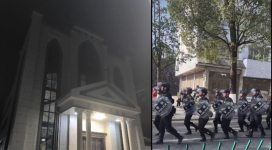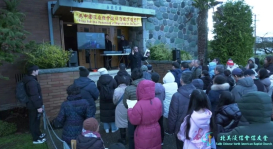
The remains of a medieval girl have been discovered by Italian archeologists at the complex of San Calocero in Albenga.
According to the archaeologists, the girl was considered a witch during her time and was burnt to death as punishment.
The girl, aged around 15 to 17, was "severely malnourished," according to the team led by Philippe Pergola from the Pontifical Institue of Archaeology at the Vatican. Moreover, the "witch girl" was found to have suffered from a disorder called scurvy.
The burial site has led to a speculation that the girl has been treated as a threat even after her death. The remains showed that the girl has been forced into the pit with her elbows bent and her chin almost touching her breastbone.
It was furthermore speculated that the girl was burnt in a different location.
Just like any other deviant burials, the girl was forced into the pit face-down. They had to bury the witches this way because it was believed that this will prevent the soul "from rising from the grave," according to Discovery News.
In September 2014, another girl was found at the site. The archaeologists stated that it is unlikely that these two incidents are related. The first girl was buried during the 1400s while the next one was at the beginning of 1500s. However, finding these girls in the same location has been an interesting fact for the archaeologists.
"We are waiting for the radiocarbon dating results. At the moment we can date the burial between the 9th and the 15th century," said Stefano Raoscio, excavation director.
Anthropologist Elena Dellu told Discover News that they were still unsure on whether the girls were buried alive or not.
"Fire attacked her body when soft tissues were still present, so it could have occurred before death or soon after," Dellu said.
There were several factors to consider since aside from the burning, these girls were also attacked by the people who threw heavy stones at them.
The remains of the first "witch girl" revealed several health conditions including enamel hypoplasia, anemia and porotic hyperostosis on the skull.
On the other hand, the second girl was too damaged that only the scurvy was determined.
"At the end of the digging campaign, we will focus on specific analysis. If the radiocarbon dating shows the two girls are from the same period, we will try to compare their DNA," Dellù said.
The excavation is funded by private organizations and will continue until 2016.







